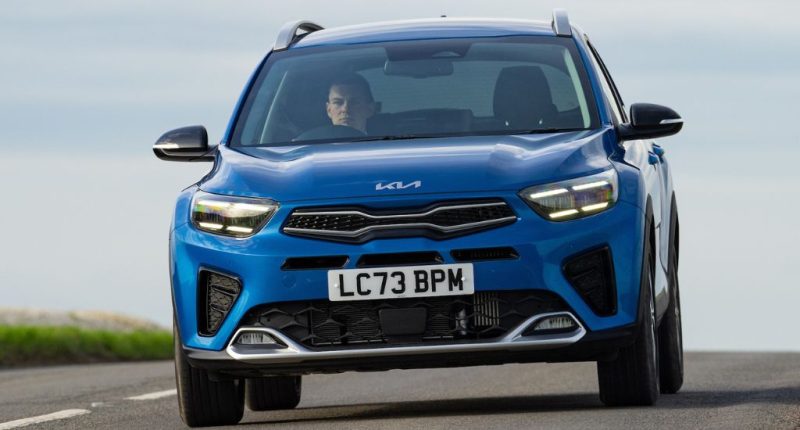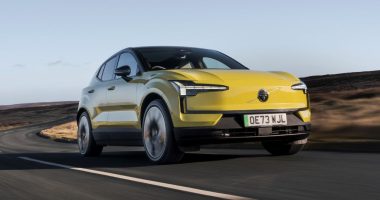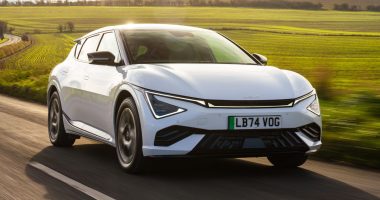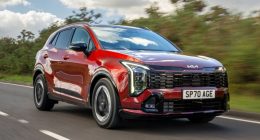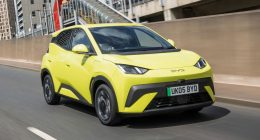These are exciting times to be working at Kia. Its flagship seven-seat EV9 has just been crowned World Car of the Year and World Electric Vehicle of the Year, the covers recently came off its space age E4 saloon, and sales are strong in the face of a cost-of-living crisis. With that all going on, you can be forgiven for overlooking core models such as its entry-level Sport Utility Vehicle, the Stonic.
On sale since 2017, it has been on the receiving end of some subtle cosmetic and technical tweaks in the intervening five years until the long-awaited mid-cycle facelift started flooding forecourts and showrooms, which it now has. But being an up-date and not an all-new model, it continues to share its platform – and many of the crucial oily bits – with its now defunct Rio supermini sibling.
In the UK, buyers have four models to choose from – ‘2’, ‘GT-Line’, ‘3’ and ‘GT-Line S’ – on top of a six-speed manual or seven-speed dual clutch transmission. Only one engine powers the range, a 1.0-litre T-GDI that develops a total of 98bhp in the two more affordable trims and mild 48-volt hybridisation in costlier ‘3’ and ‘GT-Line S’. The extra weight of the small energy pack does come at a cost, with both exhaust pipe emissions – and predicted economy – marginally poorer compared to the pure petrol engine.
There are also some key performance differences depending on whether you opt for a manual or self-shifter; the former takes 11.1 seconds to reach 62mph and the latter – which we experienced and found to be smooth and capable for the most part – another 1.3 seconds despite Kia claiming it manages to extract a higher peak torque output from the three-cylinder turbocharged unit.
Little has changed in the way the Stonic behaves itself when on the move, ensuring it remains one of the more fun-to-drive offerings in this segment. The brakes have suitable bite and, considering its target market, the steering set-up and moderate grip levels fall-down on the side of acceptable. There is also the choice of three drive modes (‘Eco’, ‘Normal’ and ‘Sport’) that quickly alter throttle response.
What is different is how the Stonic now looks. Sitting on 17-inch alloy wheels, sporty ‘GT-Line’ and ‘GT-Line S’ versions are set apart by a unique design for the gloss black and satin chrome-finished ‘Tiger Nose’ front grille while the front and rear bumpers are sculpted to integrate faux skid plates. At the back, a black rear spoiler and a GT-Line boot-lid badge can be paired to a choice of six paint finishes, including ‘White Pearl’, ‘Blaze Red’, ‘Azure Blue’, and ‘Honey Bee’ yellow.
Changes on the inside are harder to spot, although an 8-inch touchscreen infotainment system with sat-nav and ‘Kia Connect’ for Android Auto and Apple CarPlay functionality are both standard. It is disappointing to note the widespread use of hard, scratchy plastics. The D-shaped leather steering wheel, aluminium sports pedals, and faux leather seats with ‘GT-Line’ logo go some way to inject interest into a cabin that is dominated by a sea of black and grey. These dull materials extend into row two which is best suited for teenagers and average-sized adults.
Access is generally OK, so fitting a child’s booster seat won’t prove too much of a faff. 60/40 split-folding rear seats aren’t exactly revolutionary but welcome nonetheless, as is the centre armrest storage box, lower console cupholders, overhead sunglasses case, and bottle holder in each door. The 352-litre cargo area, meanwhile, has its own handy split-level ‘boot board’-inspired false floor. It still is not enough to eliminate the load lip entirely – a gripe that becomes all too apparent when loading bulky or odd-shaped items into the boot.
Standard safety equipment is strong on every Stonic as Forward Collision Avoidance with city, pedestrian, and cyclist detection form part of Kia’s ‘Advanced Attention Warning Systems’. Lane Keeping Assist, Driver Attention Warning and High Beam Assist also feature. ‘GT-Line S’ introduces Blind Spot Collision Warning – a set-up that relies on cameras and radars to avoid potential prangs.
